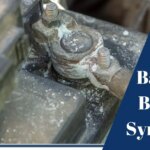
Dealing with sidewall tire damage is not a pleasant experience. You may think the damage is minor at first glance, but upon closer inspection, you may discover that you will have more damage than you imagined. What is tire damage sidewall, exactly? and how to avoid it?
Table of Contents
What Is the Definition of Sidewall Tire Damage?
Sidewall tire damage is exactly what it sounds like: damage to the tire’s sidewall, which means the damage is on the tire’s sidewall rather than the tread. In most cases, sidewall tire damage is irreversible.
You can usually notice one by looking for a deep scrape or a bubble on the sidewall of the tire. This can happen as a result of a minor collision or if you ran too close to the road’s curb. It can also occur as a consequence of sharp objects left on the road.
Sidewall tire damage is extremely dangerous to drive with and should be dealt with immediately.
What Are the Different Types of Sidewall Damage and How Do They Happen?
Degradation to the sidewall of the tires can take many shapes, and it can happen for a variety of reasons:
Tears and cuts
Poor road conditions, as well as other environmental concerns such as stones, glass, and other debris, can cause cuts and tears. They should be examined by a tire professional as soon as possible, as they will deteriorate over time.
Several scuffs and nicks
Scratching the kerb can damage more than just your wheels or hubcaps; it can also damage the sidewall of your tire. A minor scuff may not be a problem, but a serious scrape could compromise the tire’s structure and should be examined by an expert.
Bubbles and bulges
Overinflating the tires can result in sidewall bulges or bubbles, which can result in a blowout. Due to damage to the tire’s internal structure, hitting the kerb can also cause a bubble to form. An impact break is what this is called. Bulges and bubbles must be investigated right away.
Any harm to the sidewall could grow into a bigger problem, so it’s crucial that you don’t disregard it.
Is Driving On A Tire With Sidewall Damage Safe?
Simply said, NO! Now is the time for you to put your tire(s) in place. Perhaps you’ll need to put your safety glasses on and head to the nearest tire store, or you’ll need to phone for help. The most vulnerable area of your tire is the sidewall. Even if you have minor flaws, abrasions, or holes in the side, you could be in danger. It’s possible that your tire is even deflated. However, just because you may drive with sidewall tire damage on your car does not mean you should. The tire could pop at any moment, posing a perilous situation not just for you, but also for other cars!
How Much Sidewall Damage on A Tire Is Too Much?
When assessing how much sidewall tire damage is too much, a good rule of thumb is that if you could see the threads in the damage, it’s time to replace the tire.
The threads are usually found 1/8′′ to 3/16′′ (3mm to 4.5mm) inside the tire, but you must examine the damage to determine whether or not you ought to replace the tire.
If you notice an air bubble on the sidewall of your tire, you should repair it right immediately because it could blow at any time.
Allow a professional to inspect the damage to ensure that nothing catastrophic will happen to the tire.
Inquire at a repair shop that does not sell tires. If you go to a repair shop that sells tires, there’s a good chance they’ll try to persuade you to buy new ones.
What Causes Tire Sidewall Damage?
The following factors can cause tire sidewall deterioration and blowouts:
Under-inflation
Under-inflation can occur as a result of tire damage or driver error. Tires lose air at a rate of roughly 2 psi per month over time. Every 10°F reduction in temperature causes around (1) psi to disappear. Air loss may be greater in a damaged tire, resulting in a severe lack of pressure much sooner than a motorist can cope. Under-inflated tires and their sidewall counterparts can bend because there is insufficient pressure to support the passengers, vehicle, and other loads. The build-up will happen quickly, putting everyone and the car in peril.
Age
Many tire manufacturers claim that a tire is good for 8-10 years from the date of manufacturing. As a result, the rubber will start to fail as soon as it is exposed to heat and oxygen. The rubber will lose elasticity and become rigid and brittle as tire degradation progresses. The tire’s link to the inner plies will start to deteriorate, increasing susceptibility. The tire is no longer able to endure the heat. The likelihood of a tire sidewall blowout is increasing.
Damage
Tire damage can occur as a result of a variety of road dangers or poor maintenance/installation. When a tire is worn, it loses air quickly and blowouts are almost unavoidable. The tread will start to detach from the belt. The driver will then drive over a pothole or a sharp edge on the road.
There will be a puncture in the tire, which will cause it to go flat quickly or perhaps burst. It’s also possible that the tire will collapse, resulting in sidewall tire damage.
Overload
If your vehicle is overloaded with cargo, your tires may get strained, flatten or even explode. In addition, your vehicle’s stability may deteriorate, causing it to wobble or move from side to side on the road. This is quite hazardous. If you travel at a high pace with a damaged tire, your chances of sidewall tire damage increase dramatically. Because they transport substantial cargo and loads, this problem is more common in multi-purpose vehicles, vans, and pickup trucks.
Defects in the manufacturing process
An improper speed rating is the most common problem that might result in a tire sidewall blowout. A tire that has not passed the necessary testing prior to release will jeopardize the tire’s and driver’s safety, and may even lead to a lower speed rating. After installation, the tire can potentially overheat.
Tire depreciation
Did you know that driving on bald tires causes the tires to heat up far more quickly? The tires might also develop cables and disintegrate without warning. You accidentally drive on a curb while riding on bald tires with cables visible. This might result in rapid tire air loss and a tire blowout. The permitted tread depth in several states is roughly 2/32″. And if the tire depth surpasses or reaches 4/32″ – as a result of a nail or a minor pothole – a total tire sidewall blowout is almost unavoidable.
Is it Possible to Repair the Sidewall Tire Damage?
Damage to the sidewall of a tire that extends to the threads must never be repaired since it compromises the tire’s overall structure.
If the sidewall of the tire has a bubble, it cannot be fixed, and small punctures should not be repaired.
You can only glue a sidewall tire damage together if it is a very small scratch that does not reach the threads.
If the cut or damage is thus superficial, however, there is no purpose in bonding it, so I would advise against repairing a sidewall tire damage.
How Can I Avoid Sidewall Tire Damage/blowout?
Test your tire pressure at least once a month. If you forget, the oil change specialist will examine the tire pressure while you are having your oil changed.
Match the speed ratings and tire load recommendations for your vehicle. Don’t transport huge cargo in your car if it isn’t suited to manage it.
Avoid the dangers of the road. If there is going to be a lot of construction, attempt to locate a different route.
Have your tires inspected by a tire professional, who is specialized and trained can look for problems that you might miss.
Hi there! I’m Naomi O’Colman. I’ve got years of experience working at an auto repair shop here in Texas under my belt. On top of that, ever since I was a kid I’ve been passionate about the auto industry. Since I’ve joined the team at automotivegearz.com I’ve been enthusiastically sharing my passion and insights with my readers. I’m dedicated to delivering high quality content and helping you stay up to date with the latest automotive trends and products out there!







